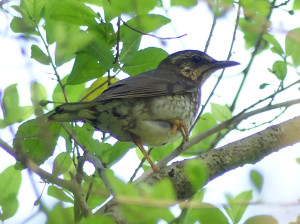
After weeks of overcast skies and stormy weather the forecast today was for clear skies. Considering that the clouds had made migrants extremely thin on the ground I wondered if things would be different with the change of weather and headed to Sri Nakorn Kuen Khan park this morning. As has often been the case early on there were no migrants other than a single Ashy Drongo but from around 8am there was a bit of an arrival of birds which gradually thinned out over the next hour until by about 10pm there were very few remaining apart from small numbers of Drongos. There were quite a few interesting birds including 3 Yellow-rumped Flycatchers, Crow-billed Drongo, 2 Mugimaki Flycatchers, 20+ Eyebrowed Thrushes, 2 Pale-legged Leaf Warblers both singing in short bursts but by far the most uncommon bird was a female Siberian Thrush which fed and rested in a small fruiting tree for about 10 minutes.
The morning started with resident species including 5 Vinous-breasted Starlings which fed on small fruits and performed a head-bobbing display and checked out a potential nest hole in a broken coconut tree.
A Black-collared Starling was also present and other resident species I saw within minutes of arrival included Stork-billed Kingfisher, Indian Roller, Greater Racket-tailed Drongo, Coppersmith Barbet, Vrown-throated Sunbird, Collared Kingfisher and Lineated Barbet. The big surprise early on was that the Pied Imperial Pigeon that I first saw on 1st April was still present, gathering some early morning sunshine. Laced Woodpecker was another bird of interest but at around 8am the migrants started to arrive.
An Eastern Crowned Warbler and a Radde’s Warbler were the first migrants that I saw but as I stood watching them my attention kept being drawn to new species including a male Mugimaki Flycatcher, several Eyebrowed Thrushes, an Oriental Dollarbird, a few leucogenis Ashy Drongos, a Hair-crested Drongo and a Crow-billed Drongo.
Something then made me walk down an overgrown trail, if I had thought about all the red ants that were going to bite me I would not have done, and my attention was drawn by a Thrush which was clearly not Eyebrowed. It took me a little while to realize that it was a female Siberian Thrush, a species which I have seen only a few times and the first time I had seen one in this park.
An adult male Yellow-rumped Flycatcher was in the same tree and the flurry of migrants continued for around another 20 minutes with 3 Barn Swallows, 2 Ashy Minivets, 1 mouhoti? Ashy Drongo, 1 Japanese Sparrowhawk, 1 female Black-naped Oriole, 2 female Yellow-rumped Flycatchers, more leucogenis Ashy Drongos, at least 8 Black Drongos and 2 Pale-legged Leaf Warblers which repeatedly sung short snatches of their trilling song.
Predictably, with the fine weather, things slowed down quickly as migrants moved on and it became very hot with a deafening noise from cicadas signalling that it was time to leave. Hopefully the weather conditions will favour some more good birding in the next few days.


 April 10th, 2017
April 10th, 2017  Nick
Nick 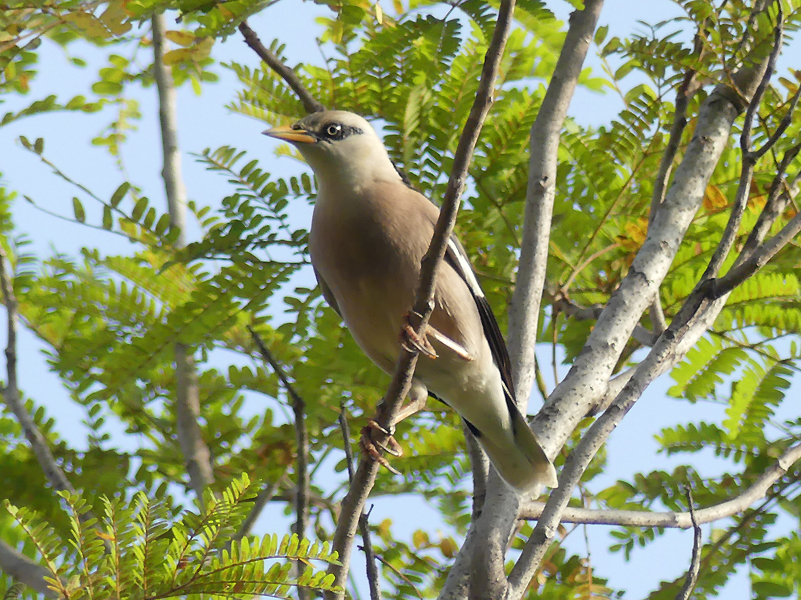
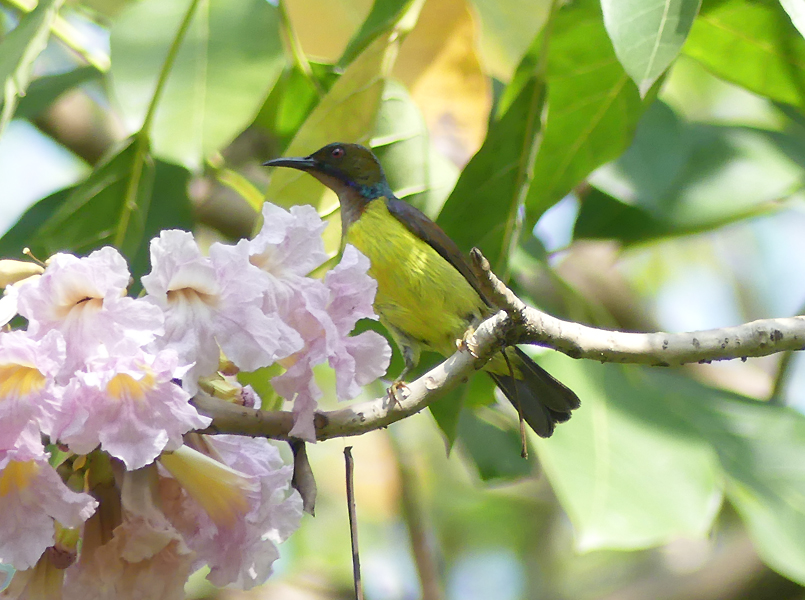

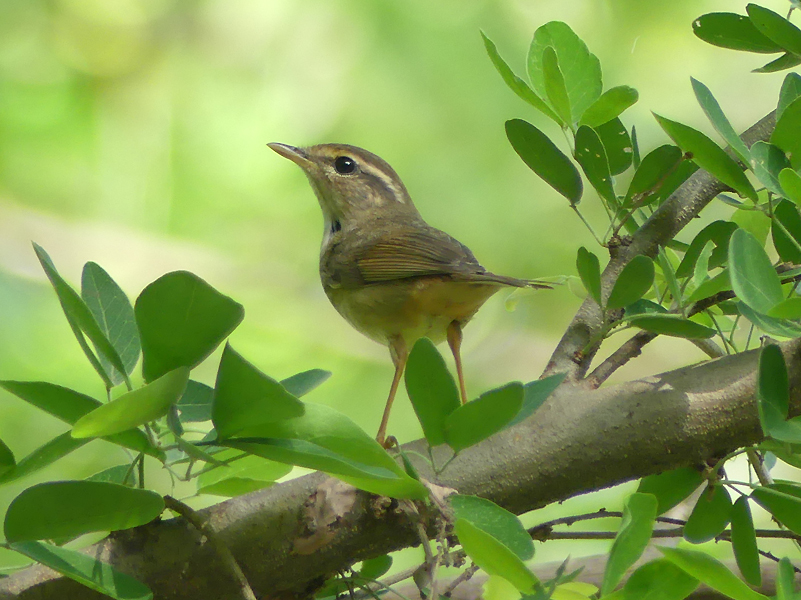


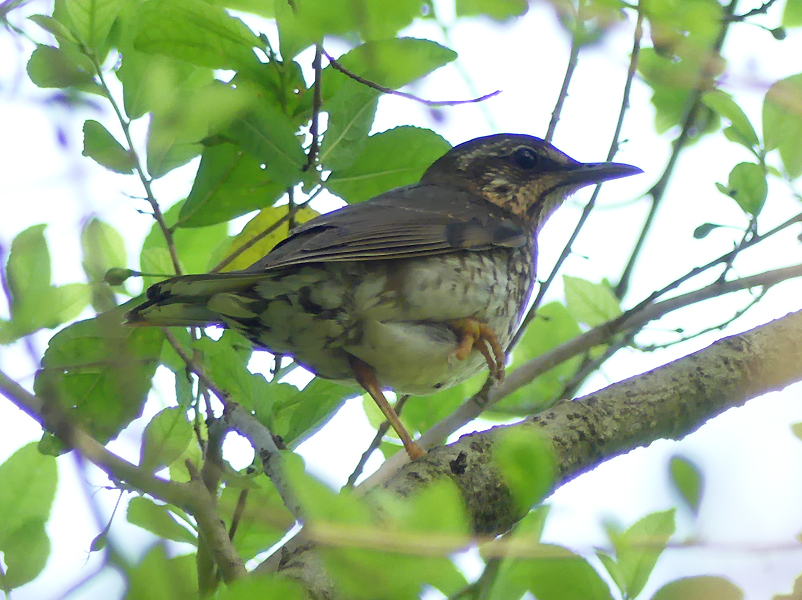

 Posted in
Posted in  Tags:
Tags: 










